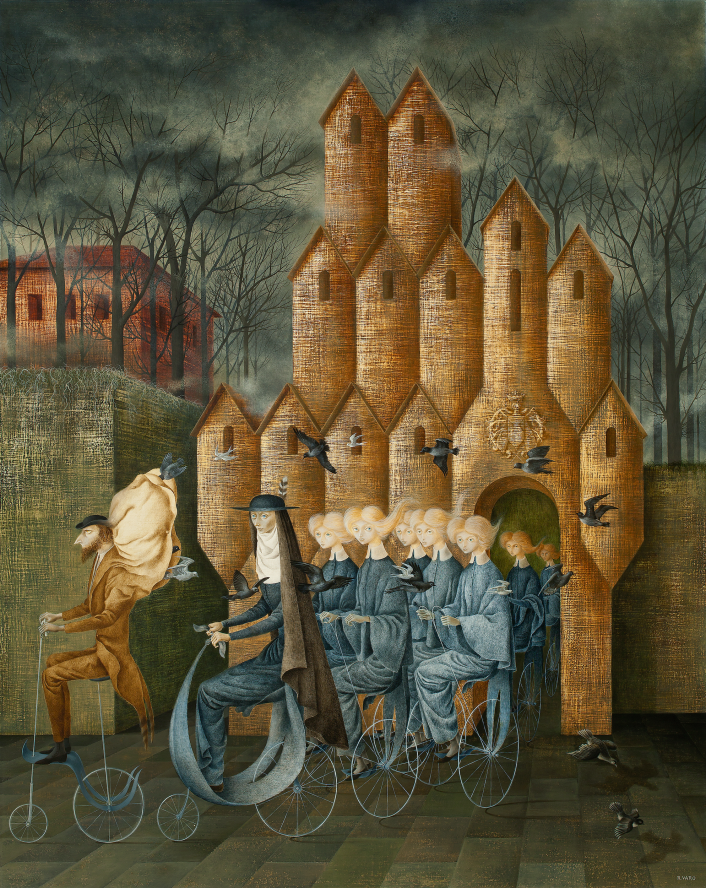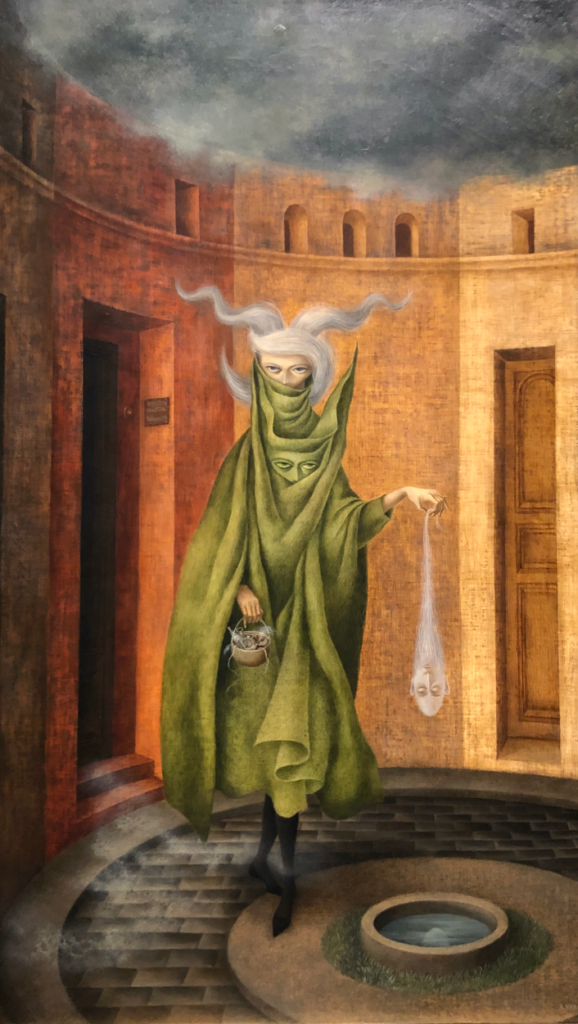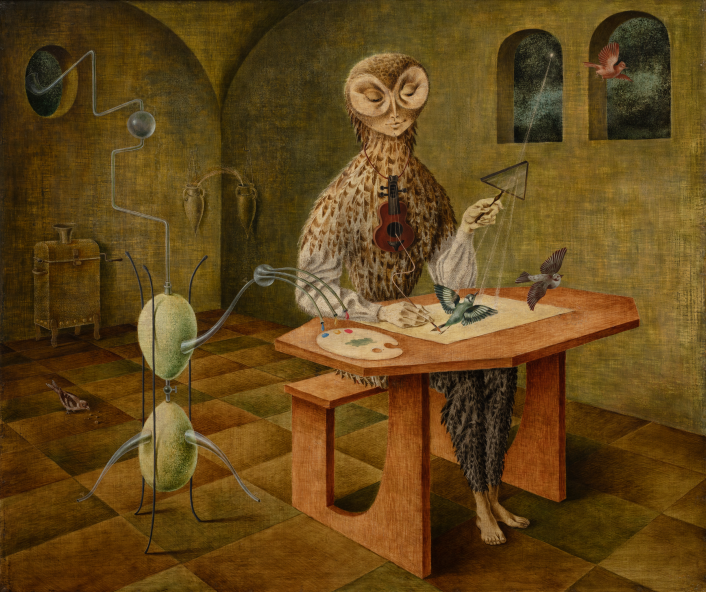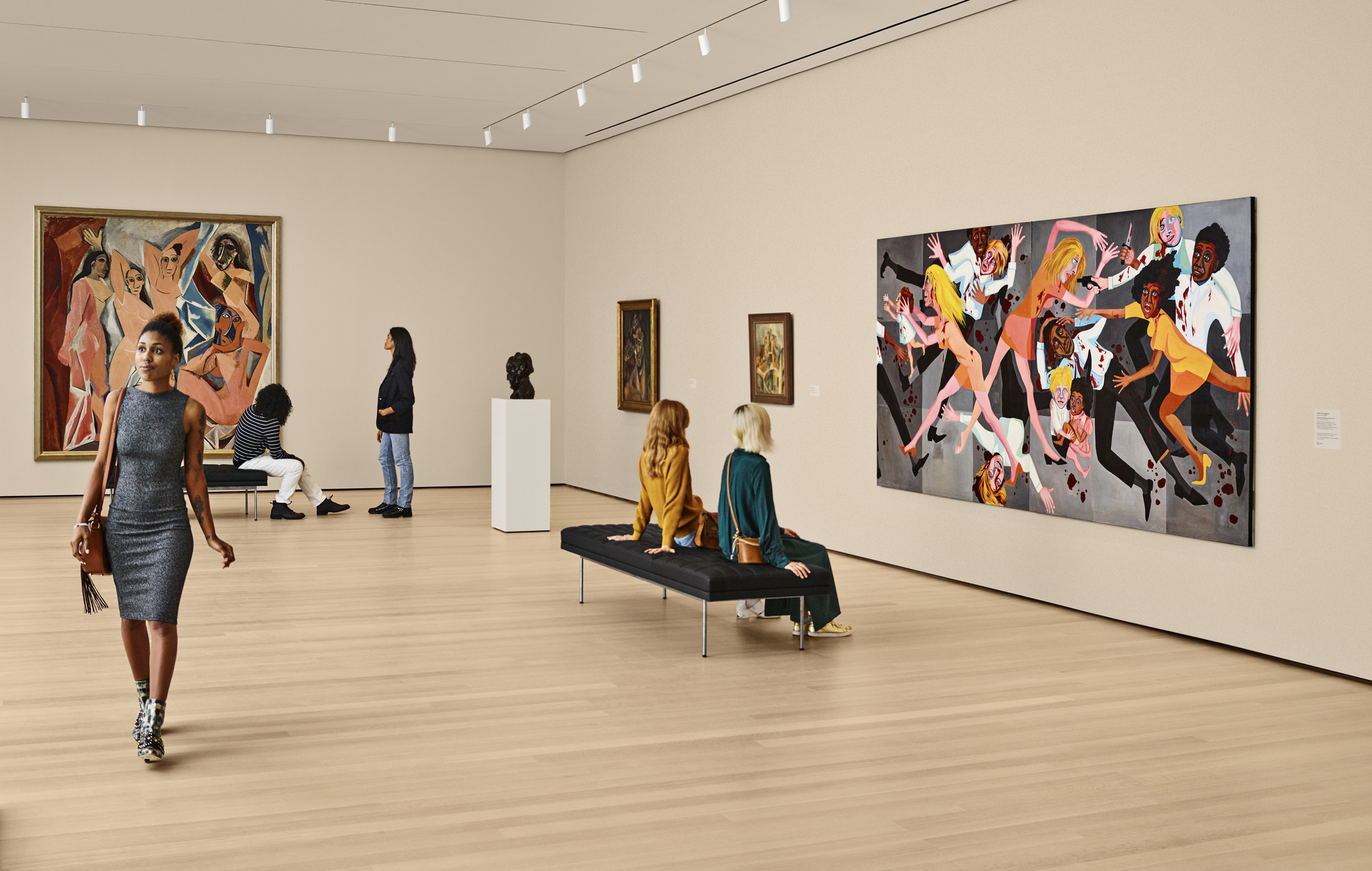Imagine starting your day with a cup of coffee and then immersing yourself in a realm of the implausible, delving beyond the visible world into the realms of molecules, energies, metaphysics, and the fourth dimension. While all artists are magicians in their own right, Remedios Varo (1908–1963) stands out as a sorceress extraordinaire. Her artwork is so unique that it defies easy categorization, aligning with the surreal sensibilities of Dorothea Tanning, Leonor Fini, or Leonora Carrington but possessing an otherworldly quality that feels like pages torn from a medieval spellbook. Varo possesses a unique ability to blend technique with content, using Surrealist methods of chance to create spaces and atmospheres infused with enchantment. Her creative process seems as much like potion-making as traditional artistic practice.
A Resplendent Return: “Science Fictions,” currently on display at the Art Institute of Chicago, marks the first major presentation of Remedios Varo’s work in the United States since 2000 when the National Museum of Women in the Arts organized a retrospective. Varo, like many women artists of her time, was historically overlooked in the Surrealist and art history narrative. Stepping into the exhibition, one is immediately bathed in the consistent orange and golden hues that grace her paintings, with certain faces inlaid with mother-of-pearl, gleaming like moonlight. Varo’s artworks beckon visitors to immerse themselves in her ethereal worlds while simultaneously challenging them to decipher the intricate narratives within her paintings.

A Journey through Life and Art: Remedios Varo’s life journey mirrors the unconventional spirit of her art. She fled her native Spain during the Spanish Civil War and found herself in the Surrealist circle of Max Ernst in Paris in 1937. With the looming threat of World War II, she immigrated to Mexico City in 1941, where she formed friendships with painter Leonora Carrington and photographer Kati Horna. Tragically, she passed away in 1963 at the age of 54 in Mexico. “Science Fictions” showcases approximately 60 of her drawings, paintings, objects, and sketchbooks from her final eight years in Mexico, spanning from 1955 to 1963.

A Fusion of Cultures and Ideas: Intriguingly, Varo’s late work was not only influenced by Mexican culture but also rooted in European references, such as medieval architecture. However, the Surrealist tendencies of Mexico and the intertwining of Pre-Hispanic mythology with Catholic beliefs offered a unique backdrop for her creative explorations. Varo’s fascination extended to hallucinogenic plants used in Mexican rituals, as well as art history, ancient religions, mythology, and poetry. Her studies encompassed the ideas of Russian mystics George Gurdjieff and P.D. Ouspensky, Christopher Fremantle, an English painter residing in Mexico, and Aldous Huxley. This interweaving of philosophy, mysticism, science, and art profoundly shaped her practice.

Transmutation through Art: Varo’s artwork often conveys her belief in the transformative power of art. “Creation of the Birds” (1957), a symbolic self-portrait, exemplifies her view. In this work, Varo portrays herself as an owl/alchemist, merging art and science. She uses a magnifying glass to filter starlight onto her paper, with one hand holding a pen connected to a string attached to a violin-like instrument around her neck, extracting music onto the page. She employs a laboratory device to vacuum colors from outside the window, which are then extruded onto her palette. In this composition, art becomes a form of transmutation, a process intertwined with the forces of the earth and cosmos. Another work, “Armonia/Harmony” (1956), serves as a primer to her investigative practice, with figures breaking free from the walls and a musical staff transforming into a three-dimensional canvas for composing with objects such as crystals, a leaf, and a pearl.

Cosmic Imagery and Symbolism: Starlight, moonlight, and gaseous atmospheres frequently reappear in Varo’s paintings. Her works often feature a central figure engaged in auguries. Notable among them is “Cazadora de Astros/Star Catcher” (1956), where a dominant female figure is adorned in robes resembling bark, bird wings, or canopies of stardust. She wields a butterfly net in one hand and a birdcage in the other, containing a captured crescent moon. Varo’s technique involves applying wet paint to the paper and then folding it to create a symmetrical Rorschach effect on the robe.

A Glimpse into the Creative Process: The heart of the exhibition features a cove of angled walls showcasing Varo’s sketchbooks, drawings, paintbrushes, books, and crystals. These crystals, believed to have been exposed to moonlight, were used to etch canvases or boards. Notably, one notebook is open to a page titled “Para provocar sueños eróticos/Spell to Provoke Erotic Dreams,” revealing the artist’s fascination with esoteric subjects. Her large drawings on translucent paper offer insight into how Varo transferred her compositions to the painting surface. Despite her meticulous, pre-planned approach, she subverts precision with chance techniques like graftage, blotting, decalcomania, sgraffito, spattering, and sponging.
A Defiant Conclusion: The exhibition concludes with a powerful trio of paintings from 1960 and 1961, featuring a woman breaking free from the constraints of brainwashing, control, and isolation. Varo’s art shines as she effortlessly juggles the science and fiction suggested by the exhibition’s title. She bridges the personal and universal, unveiling the concealed forces that constrict and suppress women. Remedios Varo emerges as a symbol of intellectual and expressive freedom, preserving her unique truth like a caged moon.
In “Science Fictions,” Remedios Varo’s art takes us on a journey through surreal dimensions, where art, science, and magic converge. This exhibition not only resurrects her remarkable work but also pays homage to an artist who defied convention and paved the way for a broader understanding of the Surrealist movement.








